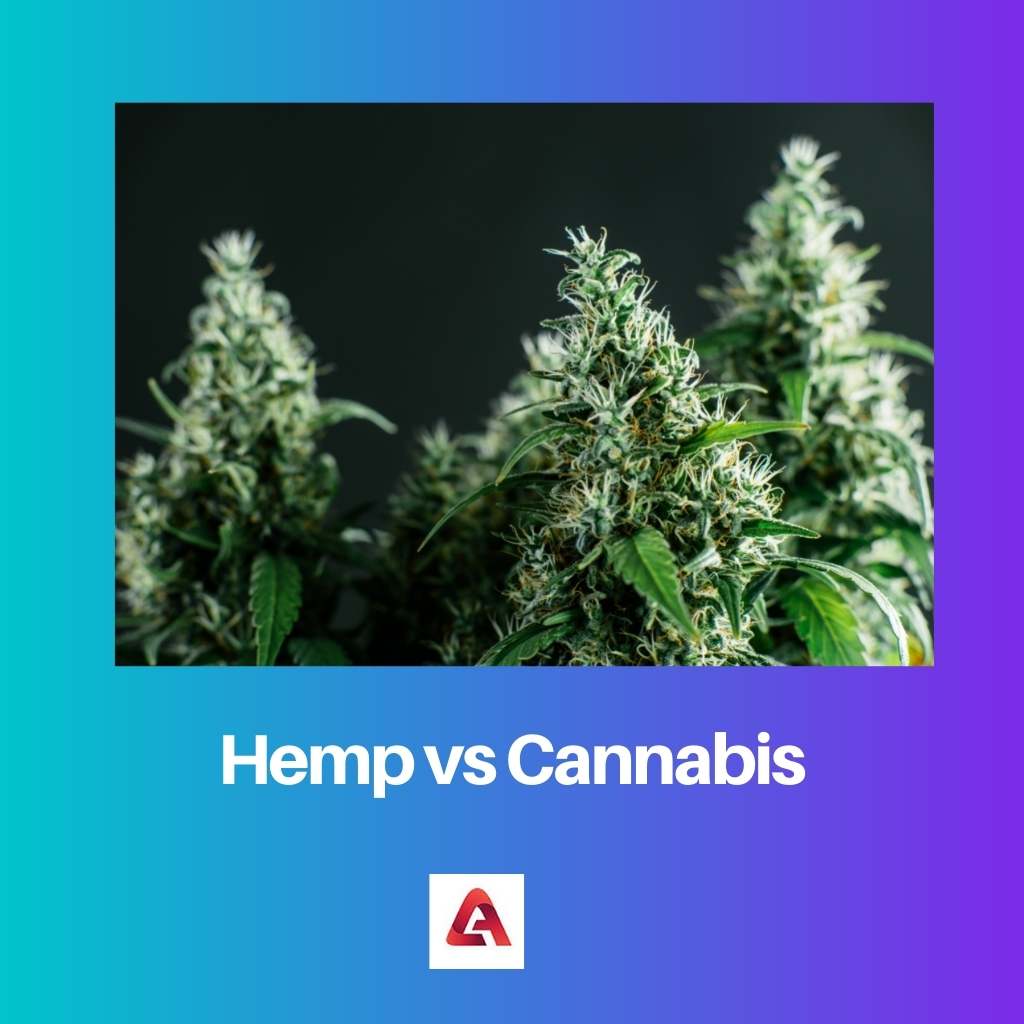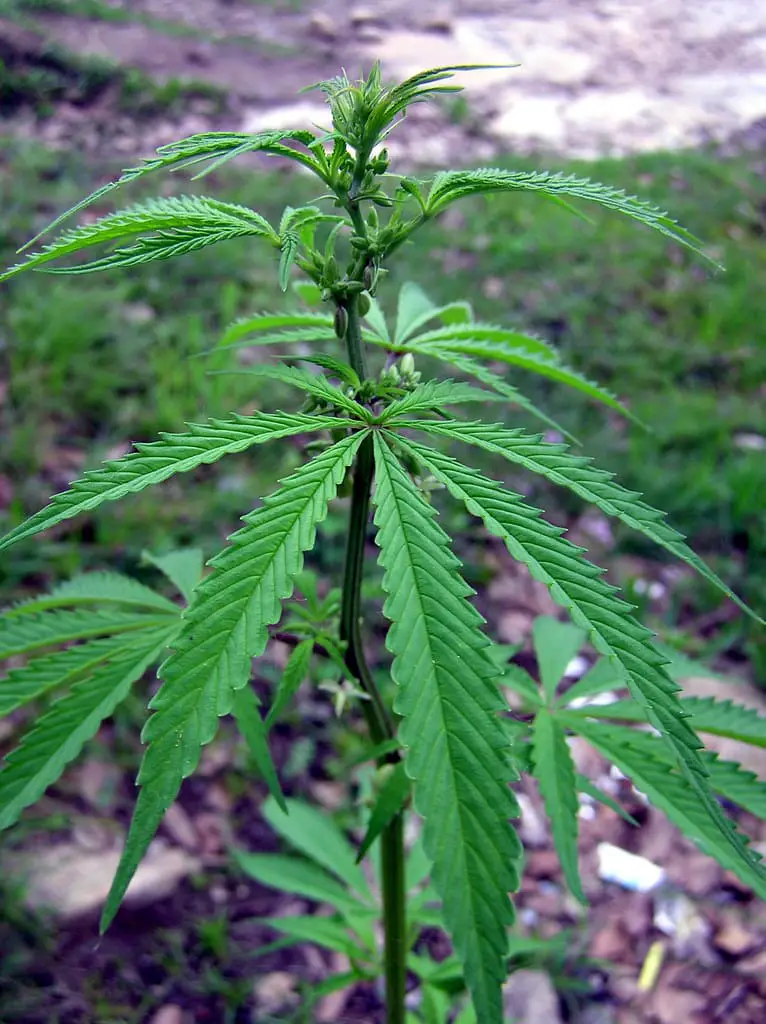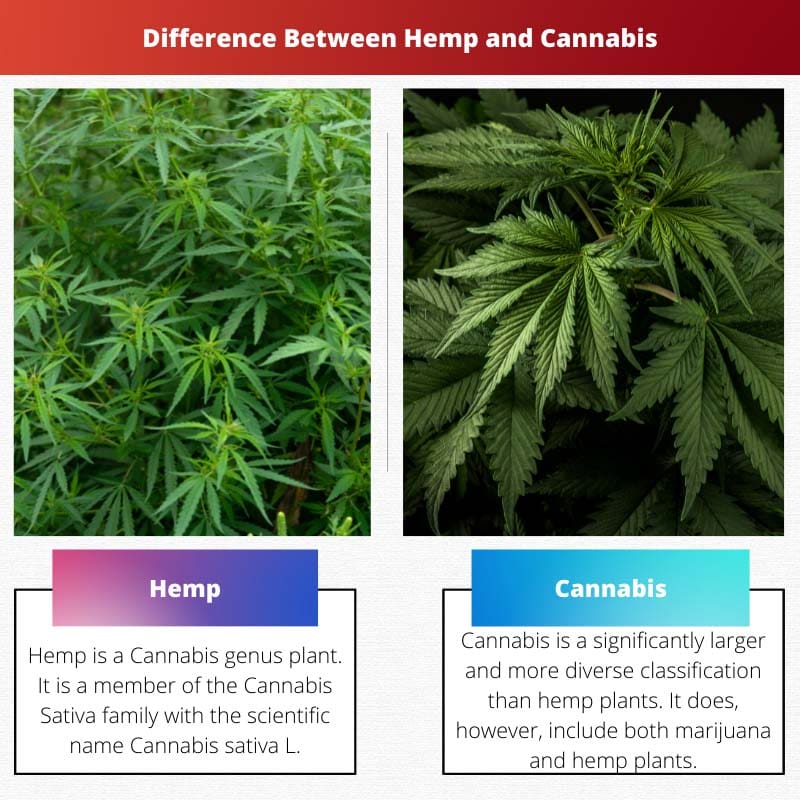Hemp farming is permitted in several nations. In the United States, however, tight laws are in place, and three states have outlawed the cultivation of Hemp.
Cannabis plant cultivation is also outlawed in several nations due to this aspect. Cannabis plants are prohibited in the United States because they contain a higher proportion of THC than 0.3 per cent.
Key Takeaways
- Hemp contains low THC levels, making it non-psychoactive, while cannabis has higher THC content, producing psychoactive effects.
- Hemp has numerous industrial uses, such as in textiles and building materials, whereas cannabis primarily serves recreational and medicinal purposes.
- Hemp is legal in many countries due to its low THC levels, but cannabis legality varies depending on the region and specific regulations.
Hemp vs Cannabis
Hemp is a strain of Cannabis sativa with low THC levels, making it suitable for industrial use. Cannabis is a plant used for medicinal and recreational purposes, with varying levels of THC-producing psychoactive effects. It is legal in some countries and states but illegal in others.

Hemp plants can be ingested without creating a high since THC levels are minimal. However, some hemp products, including candies, tinctures, and capsules, can induce euphoria in people.
Hemp is a Cannabis genus plant. It is a member of the Cannabis Sativa family with the scientific name Cannabis Sativa L.
Hemp plants have a very high concentration of Cannabidiol. As a result, manufacturers view them as a more profitable option. They also have the least tolerance for legal actions.
Cannabis is a significantly larger and more diverse classification than hemp plants. It does, however, include both marijuana and hemp plants.
Cannabis plants contain extremely little Cannabidiol, a non-intoxicating phytocannabinoid. Cannabis plants naturally contain a high quantity of THC, which causes euphoria, and as a result, rigorous rules are in place for anyone who sells or acquires them.
Comparison Table
| Parameters of Comparison | Hemp | Cannabis |
|---|---|---|
| THC amount | Less than 0.3% | More than 0.3% |
| CBD amount | More than 0.3% | Less than 0.3% |
| Classification | A type/subdivision of Cannabis plant. | Parent plant consisting of various other plants. |
| Cultivation: Legal status | Legal | Illegal |
| Causing euphoria | Generally doesn’t cause euphoria | Causing euphoria is common |
What is Hemp?
Cannabis Sativa is a subspecies of the Cannabis plant, and Hemp is the name of one of its varieties. Hemp has been cultivated for over a century and is widely utilised in the production of food, sails, clothing, rope, and other products.
Hemp plants are known to have a low concentration of THC, or tetrahydrocannabinol, an intoxicating phytocannabinoid. Industrial Hemp, or just Hemp, is a Cannabis Sativa plant with a THC content of less than 0.3 per cent.
Hemp is a type of Cannabis plant that belongs to the Cannabis genus. Cannabis sativa L is its scientific name, and belongs to the Cannabis Sativa family.
The amount of Cannabidiol found in hemp plants is extremely high. As a result, manufacturers believe them to be a more profitable option. They do, however, have the least tolerance for legal acts.
Hemp farming is legal in several nations. However, severe laws are in place in the United States, and three states have outlawed hemp cultivation. Hemp plants can be consumed without creating a high since they have a low quantity of THC.
However, some hemp products, including candies, tinctures, and capsules, can make people feel euphoric.

What is Cannabis?
Cannabis is a taxonomic name that refers to a family of flowering plants known as the Cannabaceae. There are around 180 plant species in this family.
Cannabis comes in three different varieties: Cannabis ruderalis, Cannabis indica, and Cannabis sativa.
Tetrahydrocannabinol is found in variable amounts in the cannabis plant and other plants growing beneath it. Because the amount of THC varies from less to greater, they are regarded as dangerous.
Cannabis is a considerably larger and more inclusive classification than hemp plants. It does, however, include both marijuana and hemp plants.
Cannabidiol, a non-intoxicating phytocannabinoid, is present in extremely small amounts in Cannabis plants. Cannabis plant cultivation is also prohibited in several nations due to this aspect.
Cannabis plants with a THC content greater than 0.3 per cent are deemed illegal and are not grown in the United States.
Cannabis plants naturally contain a high level of THC, which causes euphoria, and as a result, harsh rules are enacted for those who sell or acquire them.

Main Differences Between Hemp and Cannabis
- Cannabis Sativa is a subdivision of the Cannabis plant, the name of whose specific variety is Hemp. Hemp has been cultivated for the last hundred years and is widely used in manufacturing food, sails, clothes, rope, etc.
- On the other hand, The taxonomic term, Cannabis, belongs to a group of flowering plants in the Cannabaceae family.
- This family consists of around 180 plant species. Cannabis is mainly of three types- Cannabis ruderalis, Cannabis indica, and Cannabis sativa.
- The plants of Hemp are known to contain a considerably low amount of THC or Tetrahydrocannabinol, which is an intoxicating phytocannabinoid.
- However, Cannabis Sativa plants that contain 0.3% or less THC are considered industrial Hemp or simply Hemp.
- The cannabis plant, which contains various other types of plants under it, also contains varying levels of Tetrahydrocannabinol. As the amount of THC varies, from somewhere less to somewhere more, thus they are considered as not safe.
- Hemp is a subdivision of the Cannabis plant. Its scientific name is Cannabis sativa L, which is further classified under Cannabis Sativa. On the other hand, Cannabis is comparatively a much bigger and broader classification than Hemp plants.
- However, it contains both marijuana and hemp plants as well.
- The level of Cannabidiol present in the hemp plants is considerably high. Thus, they are considered a better lucrative option by the manufacturers.
- However, they possess the least indulgence in legal actions as well. On the other hand, the amount of Cannabidiol, or a non-intoxicating phytocannabinoid present in the case of Cannabis plants, is very lower.
- This factor also makes Cannabis plant cultivation illegal in various countries.
- The cultivation of Hemp is legal across various countries. However, in the USA, strict regulations are imposed, but three states have prohibited the producers from cultivating Hemp.
- On the other hand, as Cannabis plants contain a higher percentage of THC, that is more than 0.3%, they are considered illegal and not cultivated in the US specifically.
- Due to the presence of a low level of THC, hemp plants can be consumed without causing high. However, some types of Hemp, which are processed like gummies, tinctures, and capsules, are the potential enough to cause euphoria in people.
- On the other hand, due to the natural presence of the high amount of THC in Cannabis plants, they cause high euphoria; thus, strict laws are made for those who sell or buy them.




